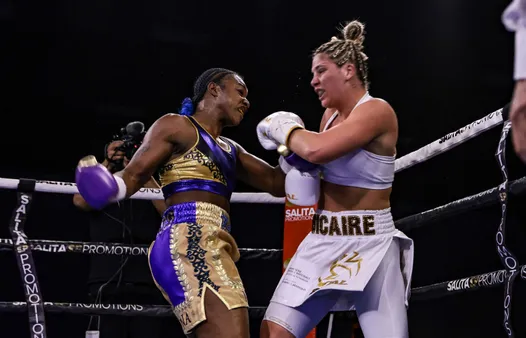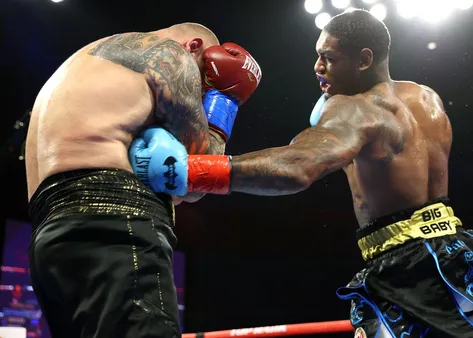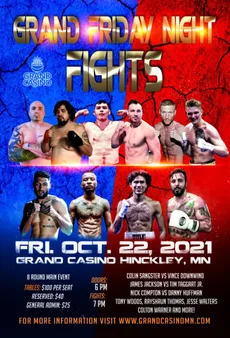Table of Contents
Prepare to enter the captivating world of boxing, where the fiercest competitors collide in a spectacle of power and precision. Kizworld brings you an exclusive journey through The top boxing competitions and events that have ignited the passion of fans worldwide. From legendary championship fights that forged the sport's greatest legacies to exhilarating international tournaments that showcase the raw talent of rising stars, we delve into the heart-pounding moments that have shaped the landscape of this captivating sport.
The Top Boxing Competitions and Events: A Journey into the Ring
I. The Top 5 Must-See Boxing Events
Prepare to witness the unparalleled spectacle, raw power, and unwavering determination of the boxing world's finest at these 5 must-see events. These legendary clashes have solidified their place in boxing history, captivating audiences with their unforgettable displays of athleticism and grit. Experience the essence of this timeless sport as we delve into the heart of these iconic boxing events.
A Thrill-Packed Encounter: "The Rumble in the Jungle"
In this electrifying showdown held in Kinshasa, Zaire, in 1974, Muhammad Ali faced off against George Foreman in an epic clash dubbed "The Rumble in the Jungle.” With skilled footwork and a resilient spirit, Ali defied expectations and delivered a stunning upset, reclaiming his title as the heavyweight champion. This historic event transcended the realm of sports and became a symbol of African pride and global unity.
"The Fight of the Century": A Clash of Titans
A sold-out Madison Square Garden witnessed "The Fight of the Century" in 1971, where Joe Frazier and Muhammad Ali engaged in a fiercely contested bout. This gripping encounter unfolded as a strategic battle, with both fighters showcasing their remarkable skills and relentless determination. The intense rivalry between Ali and Frazier made this matchup even more captivating, etching it into the annals of boxing history.
- Related: The Top Boxing Competitions and Events
- Related: How to Watch Boxing Online
Sugar Ray Robinson vs. Jake LaMotta: A Technical Masterpiece
In 1942, the boxing world witnessed a technical masterpiece as Sugar Ray Robinson and Jake LaMotta, two pugilists renowned for their exceptional skill, squared off in the ring. Their bout, known as "The St. Valentine's Day Massacre," unfolded as a chess match, showcasing their refined technique and strategic brilliance. Robinson's quickness and agility proved too much for LaMotta, resulting in a decisive victory that cemented Robinson's status as one of the greatest boxers of all time.
A Triumph of Determination: James J. Braddock vs. Max Baer
In a remarkable tale of resilience and determination, James J. Braddock, a former dockworker, embarked on an improbable journey that led him to a heavyweight championship bout against the formidable Max Baer in 1935. Braddock's inspiring story, chronicled in the film "Cinderella Man," captured the hearts of millions as he overcame adversity and delivered a stunning upset against the heavily favored Baer. His victory served as a beacon of hope during the Great Depression, reminding people of the indomitable spirit of the human will.
- Related: The Toughest Boxers in History
- Related: The Greatest Comebacks in Boxing History
Thrilla in Manila: A Saga of Rivalry and Redemption
The "Thrilla in Manila," held in 1975, marked the culmination of a bitter rivalry between Muhammad Ali and Joe Frazier. This brutal and grueling encounter tested the limits of human endurance, with both fighters pushing each other to their physical and emotional breaking points. Ali's relentless aggression and Frazier's unwavering determination created an unforgettable spectacle that left an indelible mark on the sport of boxing. The fight's iconic status is further cemented by the inspiring story of redemption and reconciliation between Ali and Frazier, who eventually became close friends.
- Related: The Greatest Rivalries in Boxing History
- Related: The Most Brutal Boxing Matches of All Time
II. The History of Olympic Boxing: A Legacy of Greatness
The History of Olympic Boxing: A Legacy of Greatness
Throughout history, boxing has had an undeniable presence in the world of sports, earning its place in the ancient Olympic Games. This section delves into the storied history of Olympic boxing, tracing its evolution from its humble beginnings to its current status as a globally recognized and celebrated event.
The origins of Olympic boxing can be traced back to ancient Greece, where it was introduced as a combat sport in the 23rd Olympiad (688 BC). It quickly gained popularity among athletes and spectators alike, becoming one of the most anticipated events in the ancient Olympic Games. The sport was initially practiced with bare knuckles, resulting in frequent injuries and even fatalities. However, the introduction of boxing gloves in the 19th century significantly reduced the risk of serious harm, leading to the sport's wider acceptance and popularity.
Year | Event |
1920 | Introduction of boxing weight classes |
1924 | First official Olympic boxing tournament |
1960 | Cassius Clay (Muhammad Ali) wins gold medal |
1984 | Sugar Ray Leonard wins light welterweight gold |
2012 | Women's boxing makes its Olympic debut |
In 1867, the Marquess of Queensberry rules were established, which standardized the rules and regulations of boxing. These rules are still largely followed in amateur and professional boxing today. The first official Olympic boxing tournament was held in 1904 in St. Louis, Missouri. The event saw the participation of boxers from six different countries, with the United States dominating the medal count.
Over the years, Olympic boxing has witnessed some of the greatest boxers in history grace the ring. Names like Muhammad Ali, Sugar Ray Leonard, and George Foreman have all left their indelible marks on the sport, inspiring generations of boxers and fans alike. These iconic figures have demonstrated not only exceptional athleticism but also unwavering determination and a relentless pursuit of excellence.
III. Legends of Boxing: The Most Iconic Fighters
Legends of Boxing: The Most Iconic Fighters
A Pantheon of Pugilistic Greatness
- Muhammad Ali: The "Greatest of All Time" with his dazzling footwork and lightning-fast combinations.
- Mike Tyson: A fearsome puncher known for his devastating knockouts.
- Joe Louis: The "Brown Bomber" with his unmatched power and stamina.
From the early days of bare-knuckle brawls to the modern era of televised extravaganzas, boxing has produced a pantheon of legendary fighters who have captivated audiences with their skill, power, and determination.
These pugilists have transcended the sport, becoming cultural icons and inspiring generations of aspiring boxers. Their names are etched in the annals of boxing history, forever remembered for their remarkable achievements and unforgettable moments in the ring.
Relentless Spirit: Overcoming Adversity
Many boxing legends have faced adversity, using it as fuel to drive their success.
"I'll show you how great I am," said Muhammad Ali, defying the odds and regaining the heavyweight title at age 32 after a three-and-a-half-year exile from boxing.
- Jack Dempsey rose from poverty to become world heavyweight champion.
- Rocky Marciano overcame a string of early losses to become the undefeated heavyweight champion.
- George Foreman found redemption after a crushing defeat, regaining the heavyweight title at age 45.
These stories of resilience and determination continue to inspire, proving that anything is possible with hard work and unwavering belief. The top boxing competitions and events showcase the talents of these legendary fighters, providing a stage for them to display their skills and leave an indelible mark on the sport.
A Legacy of Inspiration: Shaping the Future
Boxing legends have not only left their mark on the sport but have also inspired countless individuals beyond the ring.
"Boxing is the ultimate challenge," said Manny Pacquiao, eight-division world champion and Filipino icon. "It's about overcoming your fears and pushing yourself to the limit."
Their dedication, discipline, and perseverance serve as an example to aspiring athletes and individuals from all walks of life. Muhammad Ali's activism and humanitarian efforts extended his influence far beyond the boxing world, making him a global ambassador for peace and social justice.
The legacies of boxing legends live on, not only in the record books but also in the hearts and minds of those they have inspired. They stand as reminders of the power of human spirit, the ability to overcome adversity, and the transformative impact of sports. The most famous boxers and champions of all time continue to captivate audiences with their extraordinary skills and unwavering dedication to the sport they love.
IV. The Evolution of Boxing: From Ancient Origins to Modern Times
The Evolution of Boxing: From Ancient Origins to Modern Times
The history of boxing stretches back centuries, with evidence suggesting its existence in ancient civilizations like Egypt, Greece, and Rome. In ancient Egypt, boxing was often depicted in hieroglyphics as a form of combat. The Greeks, meanwhile, developed a sport called "pugilism," which involved striking an opponent with the fists, wrapped in leather thongs. In Rome, boxing was a popolare gladiatorial contest, with fighters using cestus, a type of leather glove often studded with metal. Read more about the history of boxing
The modern era of boxing began in the 18th century in England, with the introduction of the Marquess of Queensberry Rules in 1865. These rules established the sport's current format, including the use of gloves, three-minute rounds, and a point system. In the United States, boxing gained popularity in the late 19th century, with fighters like John L. Sullivan and James J. Corbett becoming household names.
- Although the earliest evidence of boxing dates back to ancient Egypt, Greece, and Rome, it was not until the 18th century that the modern era of boxing began.
- The Marquess of Queensberry Rules, introduced in 1865, established the sport's current format, including the use of gloves, three-minute rounds, and a point system.
- Boxing gained popularity in the United States in the late 19th century, with fighters like John L. Sullivan and James J. Corbett becoming household names.
Ancient Civilization | Form of Boxing |
|---|---|
Egypt | Depicted in hieroglyphics as a form of combat |
Greece | Known as "pugilism," involved striking an opponent with fists wrapped in leather thongs |
Rome | A popolare gladiatorial contest, with fighters using cestus, a type of leather glove often studded with metal |
The evolution of boxing reflects the changing societal attitudes towards violence and sportsmanship. In the ancient world, boxing was often seen as a brutal and barbaric spectacle. However, over time, it has evolved into a more refined and regulated sport, with a focus on skill and athleticism. Today, boxing is enjoyed by people from all walks of life and is considered one of the most challenging and exciting sports in the world. If you're interested in learning more about boxing, check out our beginner's guide to the sport.